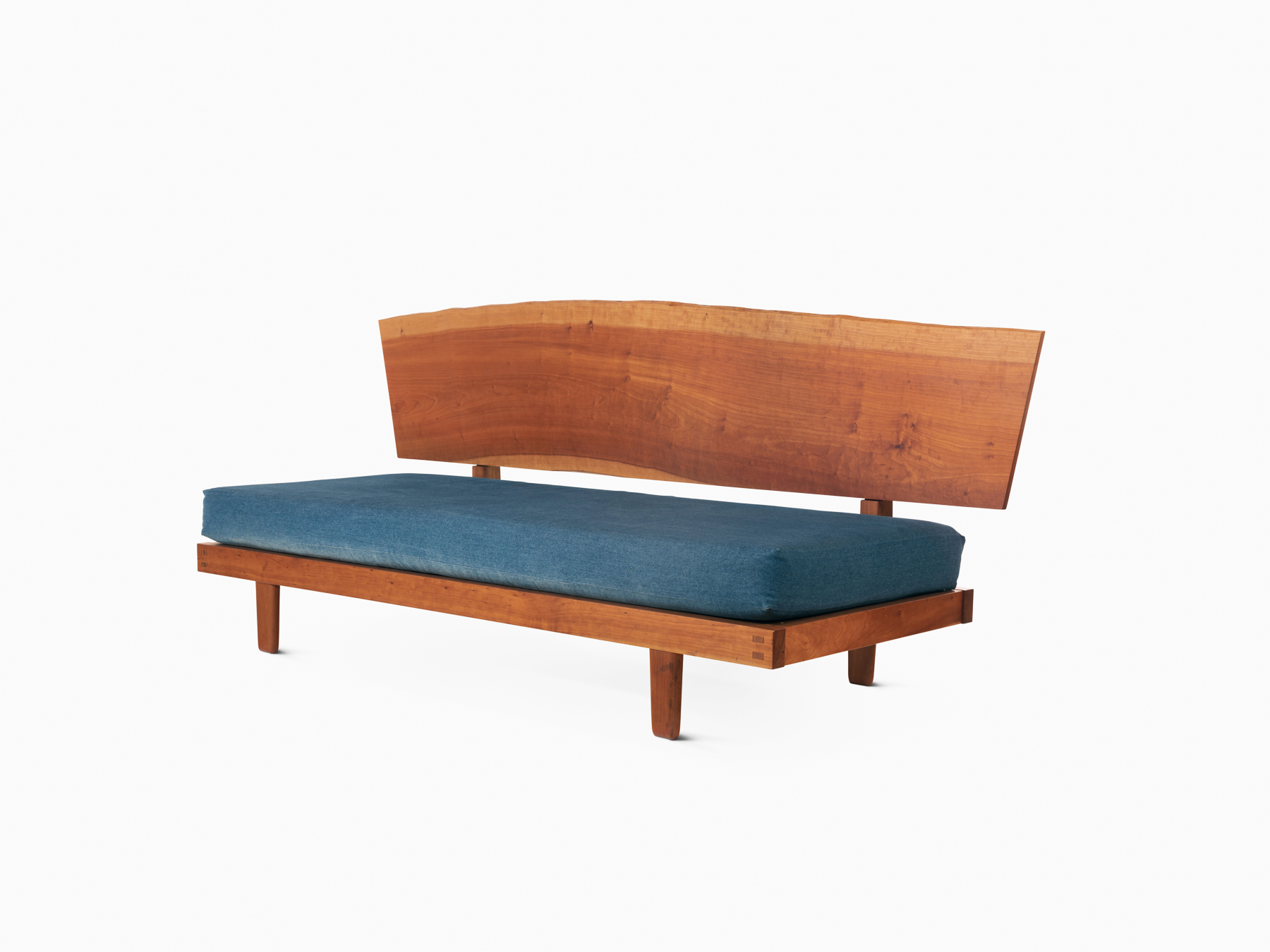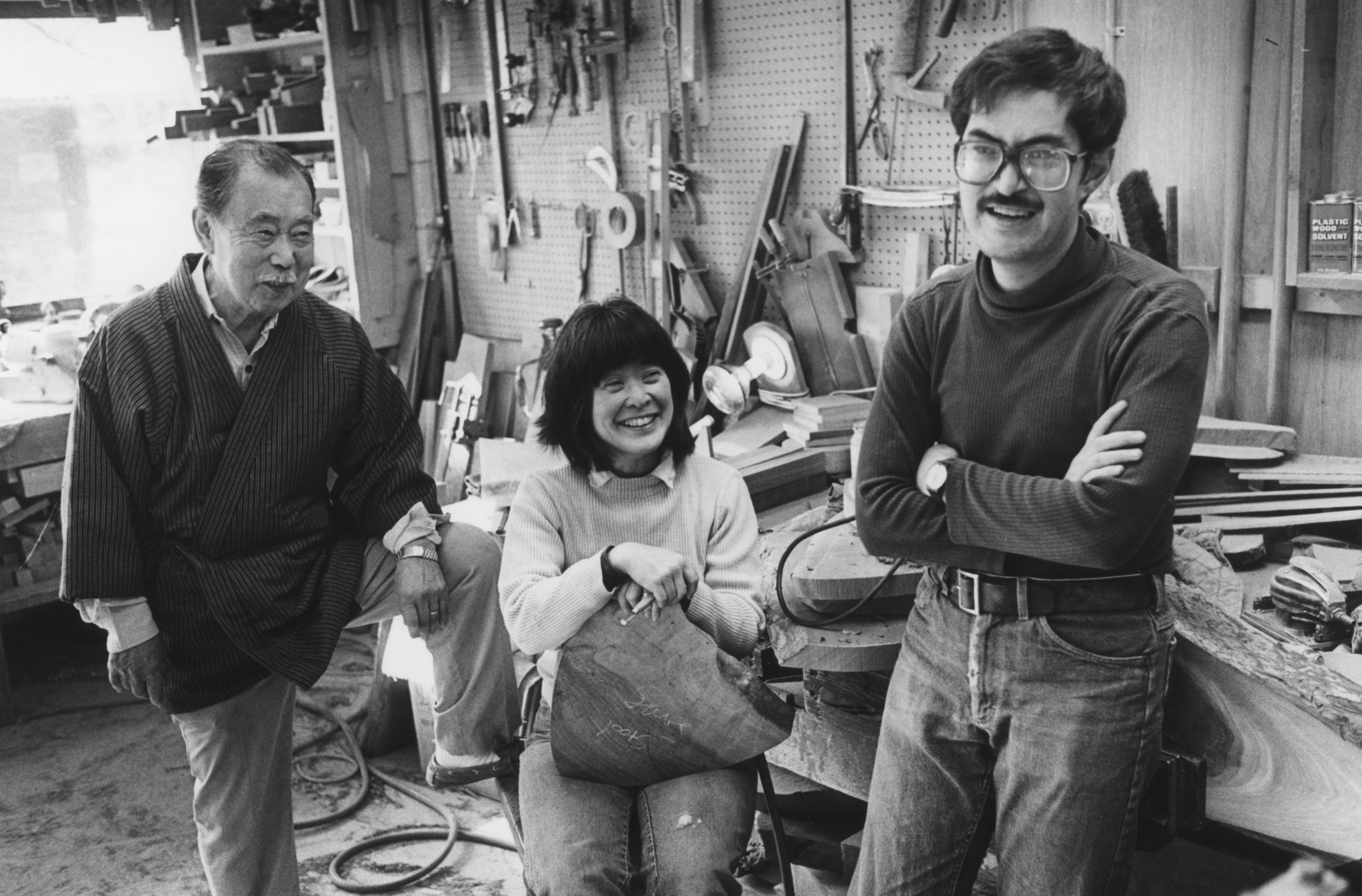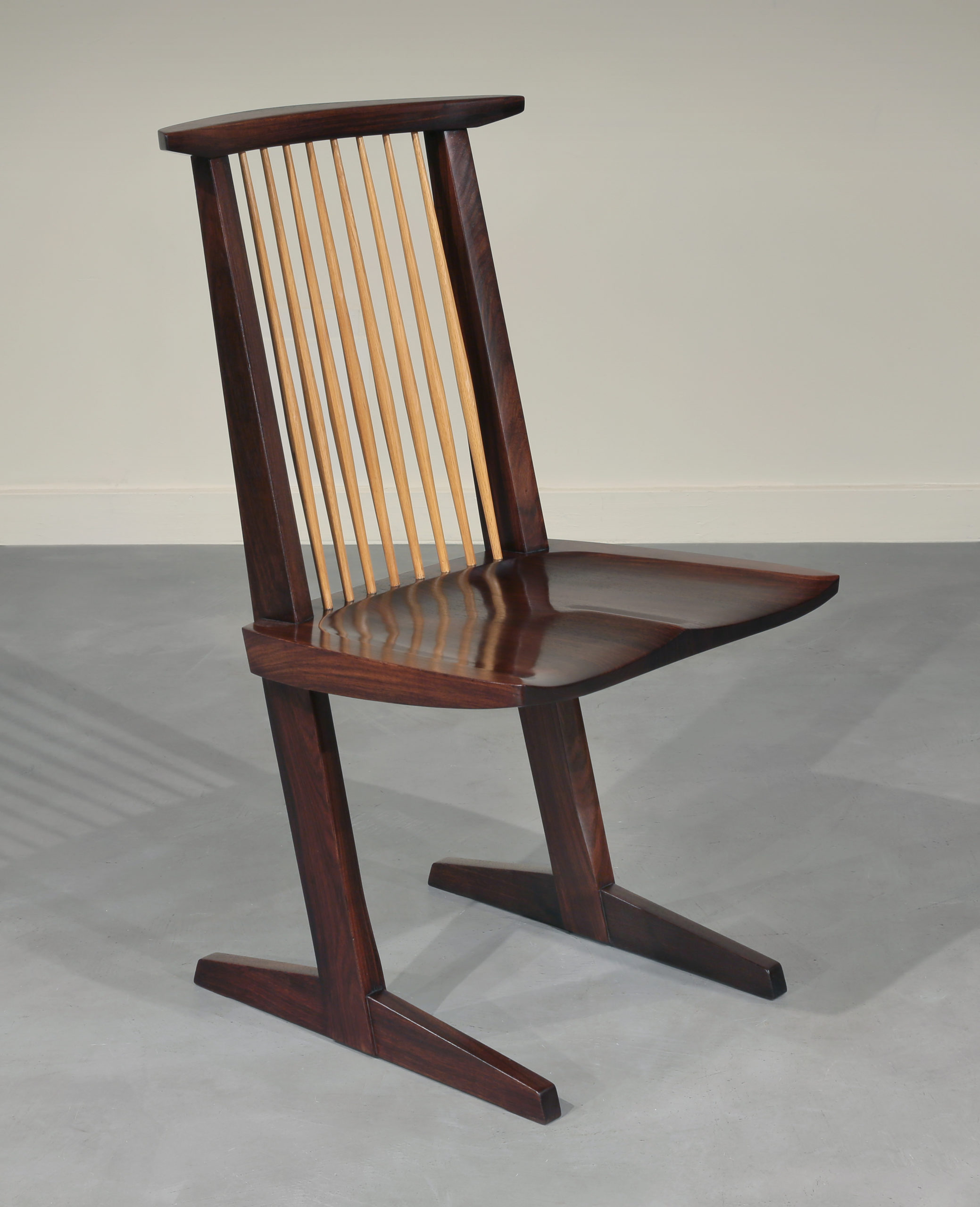“The tree lives on in its new form,” wrote George Nakashima, the great American Japanese furniture maker and designer, in his 1981 autobiography, The Soul of a Tree. In his heyday, Nakashima was unique in pioneering the use of timber in its most organic form, teasing out and celebrating the life of the tree in all its myriad imperfections. What set him apart was an intuition for what a felled log might yet become.
You’ll know a George Nakashima table by its gnarly, free edges while a finely-honed chair might hark back to his earliest influences – early American design. But it was a long journey before he arrived at the design philosophy for which he became sought after in mid-20th-century America.



Nakashima, who studied architecture at MIT, was steeped in the arts and crafts movement and greatly admired the Shaker tradition of simplicity and functionality. From 1931, he lived and worked in France, Japan and India, soaking up spiritual teachings and learning about traditional craftsmanship. In Tokyo, he worked on Frank Lloyd Wright’s Imperial Hotel and absorbed the idea of Mingei – the philosophy that design should be inexpensive and for everyday use.
In India, he oversaw the construction of the first reinforced concrete building in the country – the Golconde Dormitory in Pondicherry – and became a follower of the guru Sri Aurobindo. But soon after his return to the US, Nakashima, his wife Marion and their baby daughter Mira were interned in an Idaho camp to wait out the Second World War. It was there that he picked up traditional Japanese woodworking skills from a fellow inmate and on his release, his furniture designs really began to take shape.

Design intentions
The family settled on a hilly plot of land in New Hope, Pennsylvania, where, over time, he built a complex of studios, workshops, timber sheds and residences. He also began to carve out a name for himself in the design industry. “Nakashima used American design as a launching pad and combined it with Japanese vernacular, but made it into something that was neither one or the other. He was also very modern,” says Robert Aibel, founder of Moderne Gallery in Philadelphia, the world’s largest dealer of Nakashima’s work.
Nakashima used American design as a launching pad and combined it with Japanese vernacular, but made it into something that was neither one or the other
Robert Aibel, founder of Moderne Gallery
His pieces attracted the attention of companies such as Knoll and Widdicomb, which commissioned collections from him. “His work mixed well with Asian interiors, as well as modern interiors and then people began to realise that it mixed well with pretty much everything,” says Aibel. “Then you started to see more steel and glass buildings, and his stuff gives a warmer quality to these spaces, and to very modern houses from the 1960s. People wanted to have a warmer feeling in the house, and to bring the outside in.” The woodworker became increasingly well published, and a prestigious commission in 1972 from the Rockefeller family, for whom he designed some 200 pieces, gave him a further boost.

As orders came pouring in, Nakashima hired woodworkers to help in the studio, but oversaw every detail, from the precision of butterfly joints to the way the wood is shaped. “As his work matured and developed, there was a juxtaposition of architectural bases and completely freeform, wild tops. This juxtaposition (seen in the Conoid series) made his work, especially his later work, very special,” says Aibel.
Nakashima’s daughter Mira, also an architect and woodworker, joined the business in 1970, which freed up her father to focus on his designs and be the frontman for the brand – clients particularly enjoyed being taken to the woodshed to choose a piece of timber for their order. When sourcing supplies, Nakashima looked for unusual grains, knots and worm damage – all the things that make up the history of the tree. As time went on, he could afford to work with finer timbers: walnut, oak, cedar, cherry and English sycamore. “George respected wood so much,” says Aibel. “Not to say that he didn’t design and shape it, but he wanted to use its flaws, not erase them.”
The legacy continues
The designer died in 1990, and his family and a team of woodworkers have been working to maintain his legacy ever since. “Mira’s goal has always been to respect his legacy, the quality and the beauty. However, she’s a different person with a different eye, she has her own sensibility, her own designs – but they speak of George. And she’s the only true heir, the only true apprentice he ever had. Her work carries on his tradition,” explains Aibel.
Mira and her cousin, the TV producer John Terry Nakashima, recently worked on a documentary about the woodworker’s life. It features archive footage of Nakashima and interviews with family members, woodworkers and design critics, whose testimonies are woven together to explore Nakashima’s life and philosophy. “There’s an elegance, there’s a grace, there’s a unity. It’s not contrived, it’s not decorated – it’s pared down to the simplest form it can possibly take,” says Mira of the enduring appeal of her father’s work.
Mira’s goal has always been to respect his legacy, the quality and the beauty.
Robert Aibel, founder of Moderne Gallery

“George avoided calling himself a designer or an artist. He said they’re ego-based labels. He only agreed to the term woodworker,” adds John Terry. Today, the formality of modernism combined with organic forms is part of American design language. Specialists such as Aibel have noted that designers have begun to use wood not in imitation but by acknowledging Nakashima’s existence and influence.
As Nakashima’s reputation continues to spread across the US and the rest of the world, the prices that his pieces now command have rocketed. Large works, for instance, fetch upwards of $100,000/£75,000 on the secondary market.
There has been a recent surge in sales in Europe, too. “He was brilliant and deserves exactly the attention he is getting,” says Aibel. “One of the things that I love about his work is that it has always been for use. I know of almost no one who displays it without using it. And when people want a piece, the function in their homes is still primary – no matter what the cost.”
Effect Magazine is brought to you by Effetto



